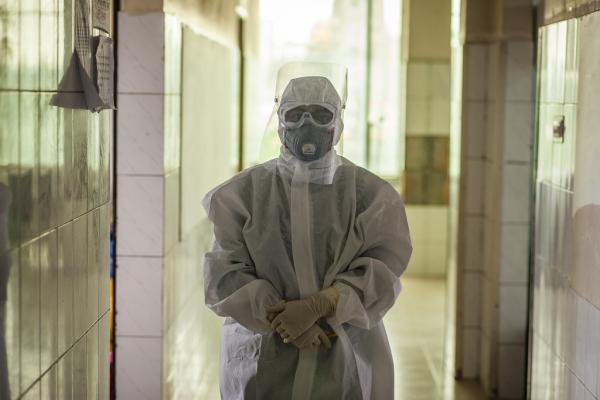
Feb 12, 2021
By Mohammad AL Dhaher
President, Green Health Canada Inc
If we look at the last 10-15 years, it is noticeable that every 2-3 years, the world is hit by one or more outbreaks that bring attention and cause panic in healthcare industry and its stakeholders. However, the scale of past outbreaks has been limited by geographic location and length of occurrence. One may argue that, in general, hospitals were able to manage most of those outbreaks with a reasonable level of efficiency. Previous outbreaks that took great amount of attention were largely transmitted through droplets and were not airborne (except for SARS and Ebola). Most hospitals, if not all, are equipped to accommodate an outbreak using rooms with droplet isolation precautions in place. But what if the next outbreak is an airborne disease? How quickly can the world respond? There are not enough isolation rooms in hospitals to handle an airborne outbreak. One possible solution is to create negative pressure isolation rooms in healthcare facilities, homes, shelters, or any building that governments decide to use for isolating patients. Mechanical engineers and some infection control leaders are aware that this is a great challenge in buildings that have old ventilation systems. Even in large hospitals, air handling units are equipped to accommodate a limited number of negative pressure rooms. Creating a negative pressure environment can be achieved without connection to the main ventilation system. The newer technologies are mostly stand-alone units that can be connected to the exhaust ducts directly. Some of these units can use a HEPA filter to clean the air, supposedly making it ready for recirculation if needed. Other options include external and internal negative pressure tents and negative pressure isolation trailers. The ongoing COVID-19 outbreak has created a unique opportunity to unite all stakeholders globally in finding a solution for an existing problem. The question is, how many organizations and research centers are willing to invest and partner in managing non-existing/future airborne outbreak that might take a long time to control? What if the next coronavirus has an airborne transmission mode? Teams from all over the world need to work collaboratively on the following: – Identify and develop globally harmonized criteria for early warning systems. – Establish a globally harmonized risk assessment tool to help governments to know when to deploy control measures in a timely manner. – Invent new control measures and isolation solutions for airborne outbreaks. – Scientists, leaders, research centers need to work collaboratively on an international harmonized large – Scale deployment strategy for possible isolation solutions One will argue that many of these tools and measures are worked on by U.S. Centers for Disease Control (CDC), World Health Organization (WHO, and many other organizations around the world. The challenge is global harmonization. If the risk assessment matrix is not harmonized internationally, then the level of risk could be misjudged in some countries. One country, one research center, one big company, or even WHO will not be enough to address the challenges and risks of an airborne outbreak. Let us start today and work together on globally harmonized response system.
Image Source: “COVID-19 emergency response activities, Sajida Foundation hospital’s isolation Center, Narayanganj, Dhaka, Bangladesh” by UN Women Asia & the Pacific is licensed under CC BY-NC-ND 2.0

 Previous Post
Previous Post Next Post
Next Post